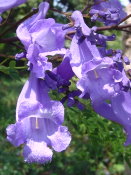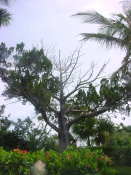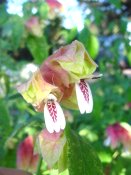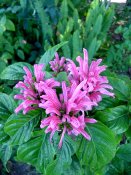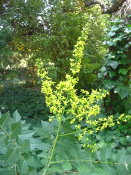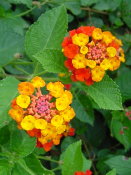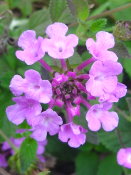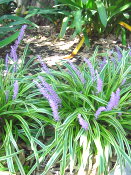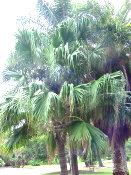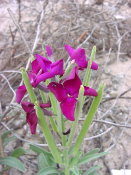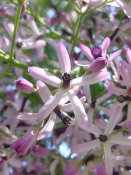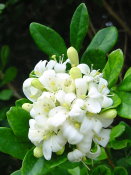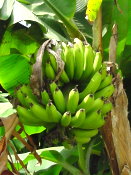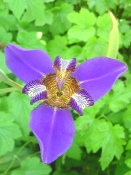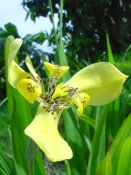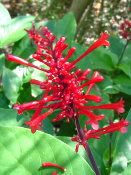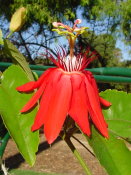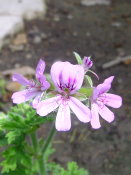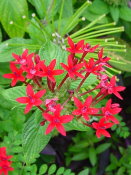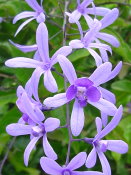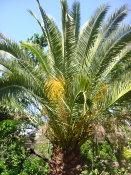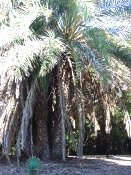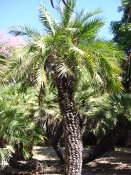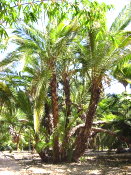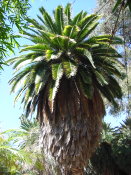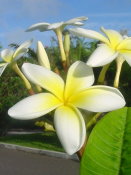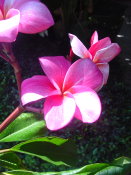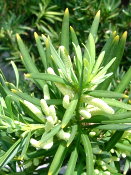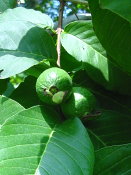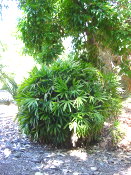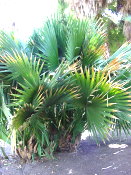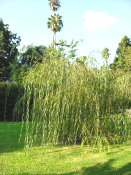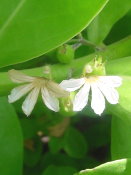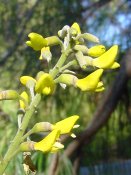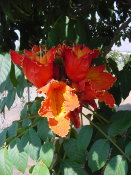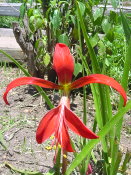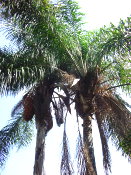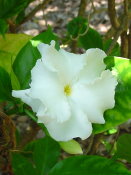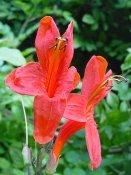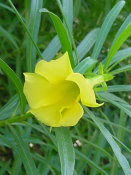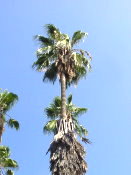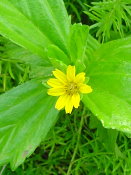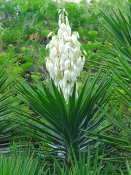Page Two
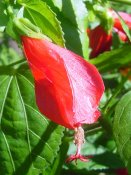 |
Malvaviscus
arboreus Sleeping hibiscus, Turk's cap, Wax Mallow |
Malvaceae
|
Introduced
|
Sometimes called Scotchman's Purse
because the flowers never open fully. Native to Mexico. Grows island wide. |
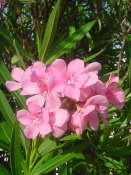 |
Nerium
oleander Oleander |
Apocynaceae
|
Introduced
|
Native to Mediterranean region
of Europe. Poisonous, if burned smoke can be toxic. Brought to Bermuda in 1790. |
 |
Quisqualis
indica Rangoon creeper |
Combretaceae
|
Introduced
|
Fragrant viney species with flowers
that change from pink to red as they age. Native to tropical Asia, the Phillipines and New Guinea. |
 |
Rosa
bracteata Macartney rose |
Rosaceae
|
Introduced
|
Native to warm parts of China,
this is locally called the Fried Egg and is often seen scrambling on old walls. Discovered by Lord Macartney in 1765. |
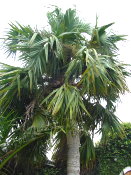 |
Sabal
bermudana Bermuda palmetto |
Arecaceae
|
Native, Endemic
|
Confined to the few remaining patches
of lowland dry or marshy scrub. Largest population at Paget Marsh. Has a stout trunk, grows to 75' or so. Also called Bermuda fan palm. Greatly affected by the introduction of non-native plants such as the Chinese fan palm, which created competition for space that it usually lost. |
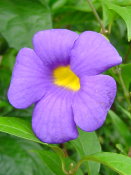 |
Thunbergia
erecta King's mantle, Bush clock vine |
Acanthaceae
|
Introduced
|
Vigorous woody shrub from tropical
Africa. Flowers are large and have a slight fragrance. |
© 2007-2021 Michael Charters
Photographs may not be used without express permission of the author.
HOME
| Wildflowers and Other Plants of Southern California |
Flora of Southern Africa |
Field Trips Photo Gallery |
Voyage to the North Pole |
